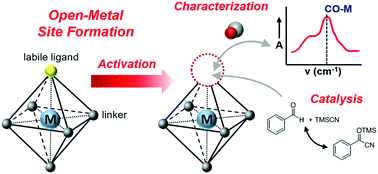Structure, characterization, and catalytic properties of open-metal sites in metal organic frameworks
Abstract
Metal organic framework materials (MOFs) offer a unique opportunity for investigating active sites that have either previously not been studied from a catalytic standpoint or have only been evaluated as homogeneous catalysts. One of the common themes in MOF research is a metal site endowed with labile ligands that can be eliminated to create a coordinatively unsaturated site, referred to as an open-metal site. Despite the ubiquitous nature of these sites, relationships between their atomic-level structure and catalytic properties are just beginning to emerge. This review summarizes the structure, characterization, and catalytic properties of three prototypical MOFs with open-metal sites (MIL-100/101, Cu-BTC, and UiO-66), with the goal of better identifying open questions in the MOF catalysis literature. Structure–catalytic property relationships for these three MOFs are discussed, with an emphasis on the effect of metal oxidation state, site proximity, defect density, and ligand functionalization on catalytic rates and selectivities.

- This article is part of the themed collection: Reaction Chemistry & Engineering Emerging Investigators


 Please wait while we load your content...
Please wait while we load your content...